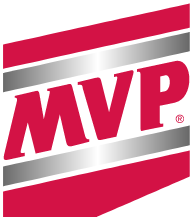Horses recovering from injuries can have a long road before returning back to work/competition. The time it can take for bone, tendon and/or ligament damage to heal can vary during the rehabilitation process. What remains the same is the common goal to promote healing and strengthen.
Once the injury has been identified one of the first steps is to help aid the body in minimizing inflammation so the healing process can begin. Inflammation may appear in the injured area, this swelling restricts blood flow which prevents healing. Icing often during the first 48 hours of the injury can help keep swelling away.
Increasing circulation to injured areas can help expedite healing. Laser, PEMF, and shock wave therapy are all great options. If the horse is restricted to stall rest be sure to communicate with your vet when to begin hand walking. Hand walking prevents stiffness, and it helps to train the new tissues forming how to move. As new tissue forms it is important to make sure your horse has what it needs within its body to heal.
Ingredients that may lend support:
Collagen- the main structural protein found in the connective tissues of the body (skin, bones, cartilage, tendons, and ligaments). Collagen is used to support joint health, nourish bones and the tendons and ligaments surrounding them, and aid in recovery from exercise and injury. As horses age less collagen is produced by the body making it important to supply to older injured horses.
Chondroitin Sulfate- helps decrease the breakdown cartilage. Research has shown that chondroitin sulfate is bioavailable in the horse and that it appears to work synergistically with glucosamine to help stimulate new cartilage production.
Manganese (Mn)- is a micro mineral essential for bone formation, growth and reproduction. Making this important for bone injuries, it also plays an important role in young, growing horses as well as active performance horses.
Copper (Cu)- is a micro mineral required for production of normal connective tissues including tendons, ligaments, cartilage and bone. Low copper levels in mares and foals have been implicated in developmental orthopedic disease (DOD) including osteochondrosis.
As you begin to start your horse back to riding it is very important to schedule routine check-ups with your vet to monitor progress as you go. A strict regimen will ensure your horse is completely healed and strengthened prior to returning to competition. Each horse may need a slightly different schedule, but here is a good general regimen from UC Davis for tendon and ligament injuries:
90–120 Days | Ride at walk 30 min daily
120–150 Days | Ride at walk 45–60 min daily
150–180 Days | Add 5 min trotting every 2 weeks
180–210 Days | Add loping 5 min every 2 weeks
210–240 Days | Add loping 5 min every 2 weeks
240–270 Days | Full flat work; no racing speed work or jumping
270–300 Days | Begin work at racing speed; jumping
300–330 Days | Return to competition
Full article/study here: http://bit.ly/AAEPRehab
Once the horse has fully healed, be mindful of allowing enough time to warm up and cool down to keep the integrity of the joints/tendons in great shape. Rehabbing an injury can seem tedious, just remember a sound horse is worth it. A good vet, a solid rehab program and a strict exercise schedule can make a full recovery possible.

